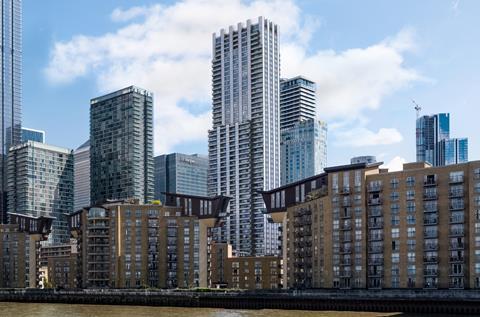��ɫ����TV Safety Bill setting out future regulatory requirements received royal assent yesterday provides more industry certainty
Growing certainty over building safety requirements could reverse a decline in new planning applications for tower schemes in London, an industry expert has said.
Data published by think tank New London Architecture this week found the number of applications in the capital for developments taller than 20 storeys fell by 13.3% last year compared to 2020.
The study found 2021 was the third consecutive year that the number had dropped, with last year’s total of 72 applications being 37% lower than the peak of 114 in 2018.

But Glenigan economics director Allan Wilen said it was too early to be alarmed at the figures because of disruption caused in recent years by Brexit, the pandemic and uncertainty over regulatory requirements for tall buildings following the 2017 Grenfell Tower fire.
He said the announcement of a new ��ɫ����TV Safety Bill, had caused “a bit of hesitation and rethinking” on the part of developers.
“There was a lot going on because of Grenfell and regulatory uncertainty both in terms of cost and consumer confidence,” Wilen said.
“Now we’re moving forward and there’s a bit more certainty as to what is required on the technical side of things to make sure those buildings are safe but also to make sure the regulatory regimes are in there to give buyer confidence.”
In January, developer Ballymore pulled a planning application for a 52-storey Docklands tower after the London Fire Brigade flagged that the building only had a single staircase to evacuate the block in the event of an emergency.
The scheme, by Morris & Co, eventually secured planning earlier this month after reworking its designs to include a second staircase.
Current regulations only require residential tower blocks to have a single means of escape but the rules have been criticised as too relaxed compared to other countries where at least two fire escapes are required.
Despite London’s falling numbers of tower applications in recent years, 2021 still saw nearly three times as many applications as the number received in 2012, when just 26 schemes taller than 20 storeys went in for planning, according to NLA.
Last year also saw record numbers of planning approvals, with 98 tower schemes given the green light compared to 72 in 2020.
Glenigan data also points to rising numbers of construction starts on towers last year, with shovels going into the ground on 23 schemes compared to 16 the year before.
Private housing accounted the bulk for the starts, with 19 residential towers recorded as starting construction compared to three office schemes and one social housing development.




























No comments yet